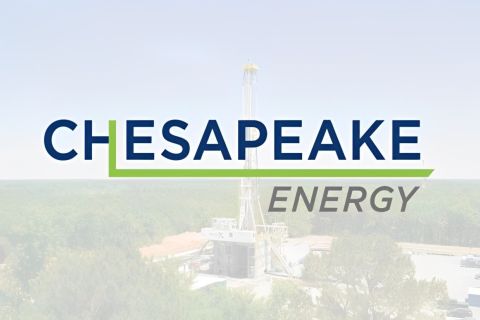While we ponder the volatility the natural gas industry has seen during the last two years-the PG&E and Enron bankruptcies, massive trading layoffs, price-fixing allegations, executive resignations-price and basis volatility seem to be the least of the industry's worries. Still, not a day goes by without someone asking, "What's wrong with the Rockies' gas price? Why is it so cheap? Why has the basis differential blown out? Is someone 'fixing' the market? What can be done?" What would typically be front-page news in the energy industry has been pushed to page three in light of all the business' more controversial issues. Gas producers throughout North America instinctively compare their actual, wellhead regional price to the Nymex price, a comparison known as the basis differential. For many reasons, gas in the Gulf Coast region commands a different price than gas in the Midcontinent or Powder River Basin. The producing areas that have suffered the worst historical relative prices (or worst basis differential) have been the Rocky Mountains and western Canada. A perfect storm Rockies gas' current $1.20 basis, or summer discount to the price on the Nymex, seems inexplicable. In April, May and June, Rockies gas on the Colorado Interstate Gas Co. pipeline (CIG) averaged $1.22 less than the Nymex price, according to Inside FERC's Gas Market Report. At press time, a producer in Wyoming was getting about $1.56 per million Btu (MMBtu) for gas delivered to CIG, whereas the Nymex price was about $3.35. That's real money lost to a producer in the Powder River Basin paying approximately 55 cents per MMBtu in gathering charges, plus fuel, to get to a CIG index price. Like an impressionist painting, if you study this "nose to the canvas" it's hard to see the big picture. People are inclined to examine one month's gas price and draw conclusions about Rockies gas' overall value. However, to get the real picture, step back and consider the historical and future perspective of the region. Perhaps the problem is about to change, thanks to a huge pipeline expansion out of the Rockies, with construction to begin this summer. Although some claim the invisible hand of the marketplace was caught in a web spun by market manipulators, one can still blame the recent California energy crisis on the "perfect storm" of weather-related anomalies. In a sense, that same perfect storm has occurred again, this time to adversely affect Rockies gas prices. The combination of the mild 2001-02 winter, record gas-storage volumes and ample hydroelectric power in the Northwest has kept demand in check and prices low. During the past 11 years, the CIG summer basis differential (April to October) has averaged just under 60 cents below the Nymex price. The winter CIG basis (November to March) has averaged just about 40 cents below. That winter-summer price difference distinguishes Rockies gas from other regions that do not experience any relevant seasonal basis differential. Rockies gas fares much worse than other areas. (See Table 1.) The simple explanation? There is relatively little summer demand for gas in the Rockies and export pipeline capacity is inadequate to prop up the price. The predictable summer industrial load that other regions enjoy does not exist in the Rockies. A recent publication that listed every industrial customer in each state took more than 30 pages for Ohio alone. Colorado and Wyoming each took one page. A weak regional market is not only peculiar to the Rockies. In the early 1990s, Canadian producers seeking to remedy their own "bad basis differential" situation took action. They began a grassroots effort to build a major crossborder pipeline into the U.S. Midwest to access more markets and overcome the differential. Their efforts fundamentally changed their marketplace. Alliance Pipeline was built and put in service in December 2000. The new pipeline, with 1.4 billion cubic feet per day of export capacity, dramatically changed the basis differential to AECO-C, a major trading hub in Alberta. Prior to Alliance Pipeline, the average basis differential to AECO-C was a negative US77 cents per MMBtu. Following Alliance's in-service date, that differential narrowed significantly to a negative US44.8 cents per MMBtu. Hope for the Rockies Rocky Mountain gas producers are about to experience an Alliance-like infrastructure expansion. The Kern River Gas Transmission Co., based in Salt Lake City, was purchased from The Williams Cos. in March 2002 by MidAmerican Energy Holdings Co., which will more than double the volume of gas that it moves through Kern River, which traverses 926 miles from southwest Wyoming and Utah to the southern California border. Pipeline capacity will be increased from 845.5 million cubic feet (MMcf) of gas per day to 1.75 billion. The expansion is really a looping of the existing pipeline, with the majority of the 700 miles of new pipe being laid parallel to, and at a 25-foot offset from, the existing pipeline. The expected in-service date is May 2003. Players on both ends of Kern River will take advantage of the new capacity. Wyoming Interstate Co. (WIC) and Overthrust Pipeline have expressed interest in bringing gas from southwest Wyoming into Kern River, and Jonah Gas Gathering has completed an expansion project that adds new gathering capacity upstream of Opal, Wyoming. Kern River has added capacity to provide up to 500 MMcf a day of incremental delivery to Southern California markets, and the California Public Utility Commission has recently established firm capacity rights for noncore shippers on SoCal's backbone system. Current California border prices justify moving Rockies gas to the Golden State markets. In April, May and June of this year, TransColorado Pipeline, with its market-based rates, was running full. With the recent basis differential between southwestern Wyoming and the San Juan Basin in Colorado and New Mexico running approximately 40 cents and a maximum transport rate on TransColorado of 30.64 cents plus fuel, it makes sense to move Rockies gas south. There, TransColorado interconnects with El Paso, Transwestern and Questar pipelines and ultimately to California. That 40-cent basis spread-twice the norm-is further proof that the northern Rocky Mountain region is suffering through a bad summer. Other pipelines have been expanding in response. Transwestern Pipeline placed its Red Rocks expansion in service on June 15, adding 120,000 MMBtu a day of new capacity on its San Juan Basin lateral between Thoreau, New Mexico, and the California border. Gas shippers that signed up for long-term firm transportation include Western Gas Resources, U.S. Gypsum and Calpine Corp. Questar Pipeline has also taken advantage of the projected widening of the basis. Its Southern Trails Pipeline project converted an existing oil pipeline (formerly called the Four Corners Pipeline) to carry 80 MMcf of gas per day and went in service last month. There are plans to expand the pipeline by another 40 MMcf for a total of 120 MMcf per day. Southern Trails connects to PG&E, SoCal and Citizens Gas Co., as well as other Rockies pipelines such as El Paso and Transwestern. Producers have watched these capacity expansions with interest after another recent expansion did not live up to their price expectations. When Trailblazer Pipeline expanded its pipeline between the Rockies and Midcontinent markets this May, producers hoped for an increase in gas prices. With the capability to send an additional 324,000 MMBtu per day to the Midwest-a region with more year-round, predictable demand-some expected to see the basis differential narrow. So far that hasn't happened. However, the Kern River expansion will provide a greater opportunity for Rockies gas to get to a more predictable, year-round market-California. Kern River expansion The expansion of Kern River pipeline should have a positive effect on the Rockies summer-winter basis differential. It is, after all, a key link between California gas demand and Rockies' supply. Its capacity expansion is more than 2.5 times greater than the most recent Trailblazer expansion. The Kern River project seems to have been conceived under a fortunate star because its timing could not have been better. Here's why. For the first 10 years of Kern River's existence, the basis differential between southwestern Wyoming and the California border was less than the cost of transportation to move gas for more than 90% of that time, on a month-to-month comparison. In plain terms, it cost more to move the gas to California than the value received for the effort. The open season for Kern River's expansion was posted during the middle of the California energy crisis-the basis spread between southwest Wyoming and California was as high as $8.20 per MMBtu in December 2000. Some of the firm-transportation shippers who committed to capacity reportedly hedged that basis differential to support their long-term commitment. When calm returned to gas markets in the western U.S., that dramatic basis differential returned to its historical norm of approximately 58 cents per MMBtu. Shippers committed to capacity on Kern's 2003 expansion and their contracted volume in MMBtu per day are shown in Table 2. Although Rockies producers look forward to having an additional outlet for their gas, the Federal Energy Regulatory Commission (FERC), as part of its routine request for information, questioned the need for the added capacity to California. Given the cancellation of some gas-fired electric-generation plants that were proposed at the height of California's energy crisis, FERC questioned which of the 2003 expansion shippers might change their own construction plans. Some of the expansion shippers such as Calpine, Mirant, NRG, Berry Petroleum and Pinnacle West, already own gas-fired electric-generation plants, and some of those, like Calpine, Mirant, and Pinnacle West, are still constructing new facilities. During the standard request for supporting documentation, FERC specifically asked Kern River to address the plans for electric-generation construction that were tied to its expansion. Kern River has addressed those concerns at FERC. In fact, Kern River requested and received approval for a new pipeline lateral in Clark County, Nevada, to feed a power plant under development there. (Other electric plants are identified in Table 3.) California steamin' California still needs additional gas-fired electricity generation-despite recent revelations that Enron may have manipulated the apparent demand for it. The party that should know the most about this is the California Independent System Operator (ISO), which controls an area that includes most, but not all, of California. It regulates generation in order to balance load and maintain planned interchange schedules with other control areas. California ISO's 2002 Summer Assessment was prepared recently in response to a request by the North American Electric Reliability Council. It said that although "adequate resources will be available to meet the 2002 summer peak, there is concern that the existing surplus capacity (i.e. operating margins) may evaporate during the next few years...Numerous generation projects planned for completion in the next few years have been cancelled or delayed. In addition, the ISO anticipates that several older generating units will be retired and additional capacity may be lost as environmental regulations become more restrictive." While the ISO remains confident that there will be demand for gas-fired electricity generation, investors are obviously concerned about several of Kern River's 2003 expansion shippers. The stock values of four of the top six expansion shippers (as measured by their volume commitment) have dropped an average of 68% from one year ago. Despite that, Moody's Investors Service indicated recently that Kern River's rating outlook is stable and that the recent downgrade to Baa1 reflects "the prospectively lower credit profile of combined existing and expansion shippers and the proportionate increase in debt." Higher prices? Despite the dramatic increase in gas production along the Pinedale Anticline in southwest Wyoming, it's hard to imagine that an incremental 900,000 MMBtu per day will suddenly appear there to fill Kern River's expanded pipe. With Kern River's expansion, southwest Wyoming gas production may never head to the east again. In fact, some Rocky Mountain gas traders believe it is possible that CIG and WIC may consider infrastructure changes that would allow them to redirect the flow of gas from the current west-to-east direction across Wyoming to an east-to-west flow. In other words, Powder River Basin gas may actually flow to Kern River. Some of the early Powder River Basin Medicine Bow Lateral shippers were enticed into committing to capacity on CIG by the reward of a severely discounted backhaul rate from Glenrock to southwestern Wyoming. What is now considered a backhaul on CIG may possibly become a forward haul. Ultimately, the directional flow of gas in and out of Wyoming will rest on the relative transport cost and basis differential between California and markets in the Midcontinent. The basis differential was even worse in July. At press time, it was $2.18 less than the Gulf Coast. Regardless of what CIG/WIC do with their flow, a higher demand for gas delivered into Kern River's expansion should cause all relative index prices in the Rockies to rise, specifically those indices tied to pipelines in southwest Wyoming, i.e. Kern River, Northwest Pipeline, CIG and Questar pipeline. Simply put, the winter-summer basis differential for Rockies gas indices should narrow thanks to the Kern River expansion.
Recommended Reading
What's Affecting Oil Prices This Week? (May 6, 2024)
2024-05-06 - Stratas Advisors forecast that oil demand for 2024 will increase by 1.41 MMbbl/d in comparison to 2023 and that oil demand will increase by 810,000 bbl/d in comparison to 2Q23.
TC Energy Preparing for Natural Gas Demand Surge
2024-05-06 - TC Energy executives expect data centers in Wisconsin and Virginia to drive as much as 8 Bcf/d of natural gas demand for power generation.
It’s Complicated: E&Ps Find Some Financial Tailwinds, But It’s Not All Smooth Sailing
2024-05-03 - Relatively stable WTI prices in the $80s/bbl provide some breathing room as companies allocate cash for operations, and pragmatism is seeping into the energy transition movement.
Pitts: US, Qatar Face off in LNG ‘Olympics’
2024-05-03 - In the LNG exporting space, the U.S. is squaring off with its fiercest competitor, Qatar, with both countries expected to outpace Australia
Chesapeake Stockpiles DUCs as Doubts Creep in Over Southwestern Deal
2024-05-02 - Chesapeake Energy is stockpiling DUCs until demand returns through growth from LNG exports, power generation and industrial activity.





